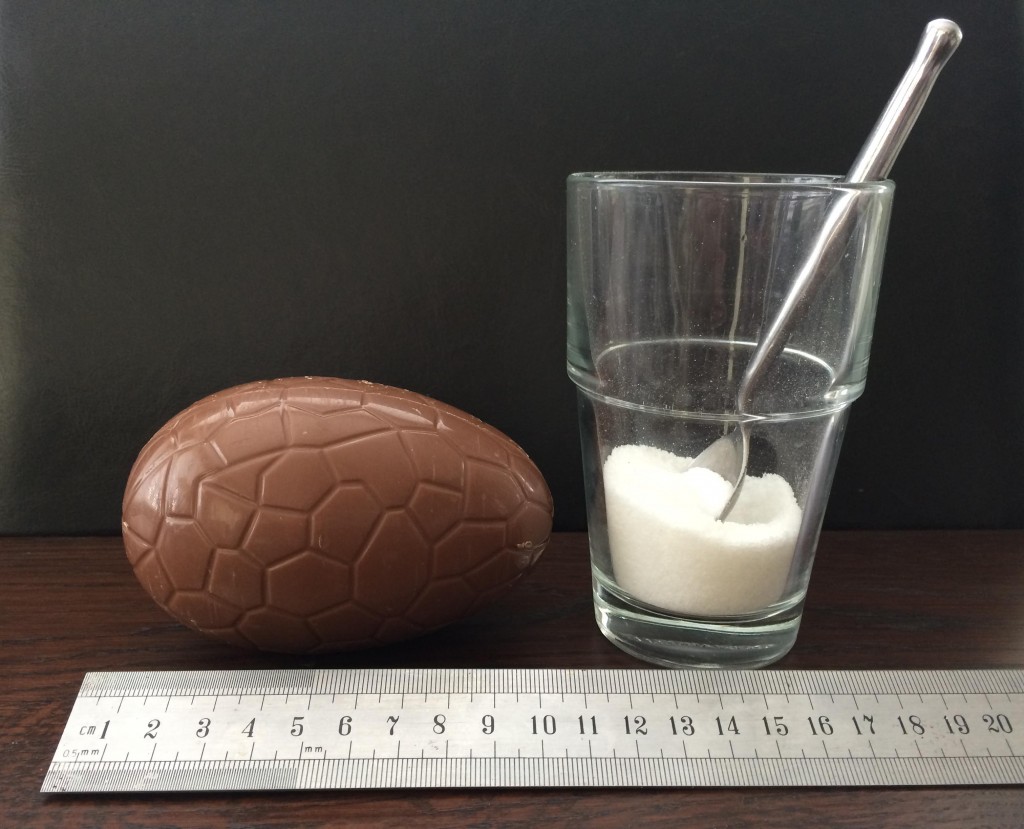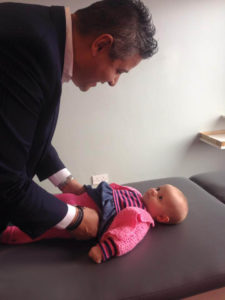Sugar in Easter Eggs – how much in a small chocolate egg?
We all know the ill effects of too much sugar.
We’ve seen several tv documentaries and read countless newspaper articles on this very topic.
A certain Easter Egg caught my eye over the weekend and I was really taken aback at the amount of sugar it contained.
Dairy Milk Buttons is one of the smallest eggs on the market and costs just €2.79 for one or €5 for 3. It holds a small 72g egg with a small 14.4g packet of chocolate buttons.
The egg pictured below contains 10 teaspoons (40g) of sugar and the packet of buttons a further 2 teaspoons (8.1g)! Unbelievable.
The egg fits in the palm of your hand – I’ve photographed it next to a centimetre ruler to illustrate its size.
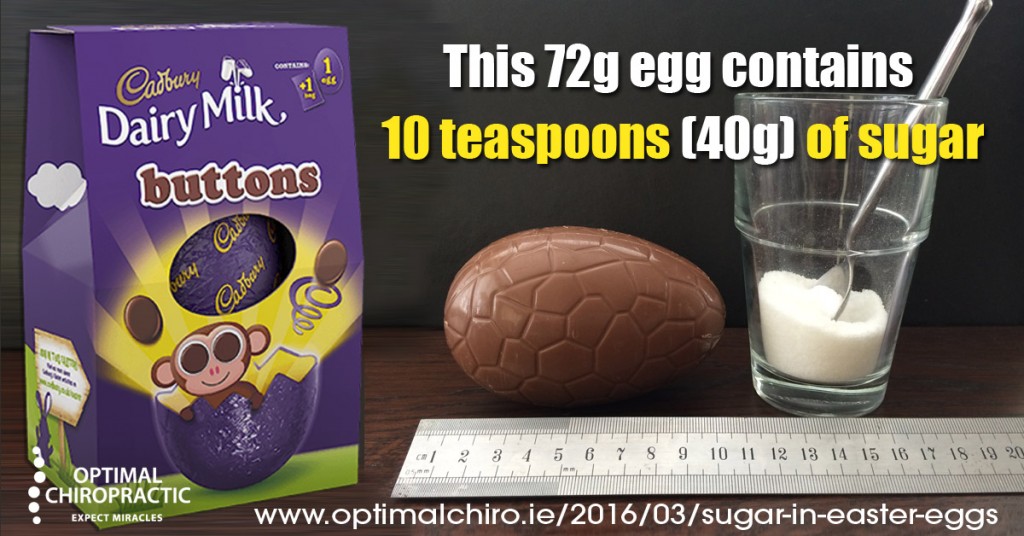
I’m not just picking on Cadbury Dairy Milk.
A Nestle Malteser Mini Bunny egg, similar in size, contains the same about of sugar.
The smallest Lindt Golden bunny (100g) contains 14 teaspoons of sugar – over 4 times the daily recommended allowance for a child.
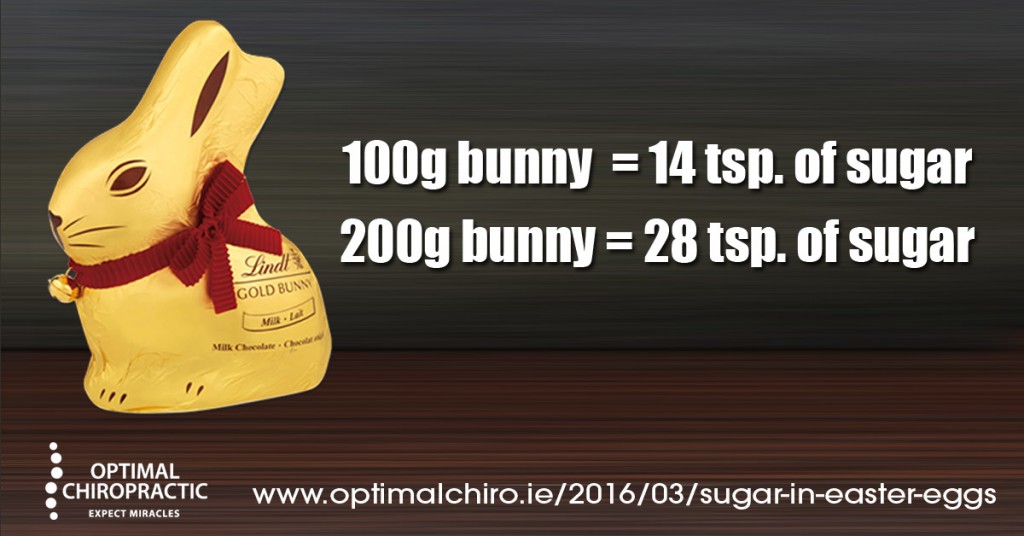
The recommended daily intake of sugar for a child is 3 to 4 teaspoons of sugar.
I chose these particular eggs as they are intended for young children. You’d be forgiven for thinking a full one is suitable for eating in one sitting, but this is clearly not the case.
Here’s how you calculate the amount of sugar in easter eggs – making it easy to ration a child’s intake of sugar over the holidays:
Remember 4g sugar = 1 teaspoon
In the nutritional information on the packaging look for Carbohydrate “of which sugars”
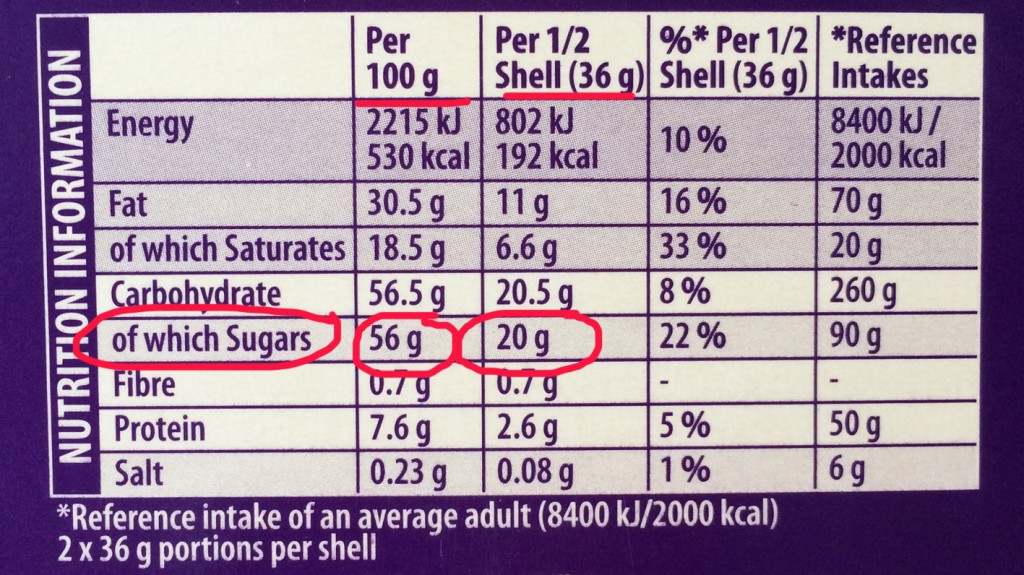
Here it gives you the breakdown per 100g and per half shell. Half shell is 20g totalling 5 teaspoons of sugar or 40g for a full egg (10 teaspoons).
It’s wise to ration a child’s intake of sugar.
We’ll still enjoy our Easter eggs this weekend but we’ll enjoy them in moderation!
Happy Easter!

